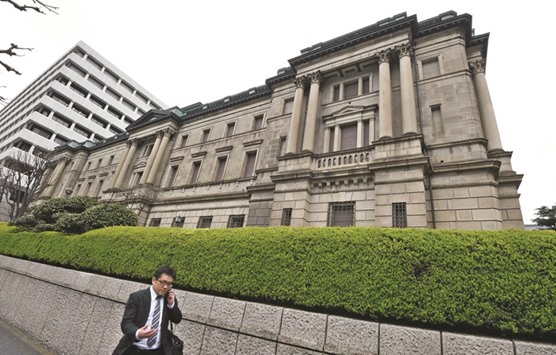For Japan’s bond investors, it seems the bigger the debt burden, the better.
Yields on some of Japan’s longest sovereign notes dropped to records as ruling party lawmaker Kozo Yamamoto floated on Thursday the idea of borrowing an extra ¥20tn ($182bn) to fund earthquake relief and bolster a struggling economy. With most of the nation’s bonds offering negative yields and the Bank of Japan cornering a third of the market as part of its unprecedented stimulus, strategists say the government with the world’s biggest debt pile will have no trouble selling more as investors hunt any notes that can be traded and offer a return.
“It’s still unclear how much in bonds will be sold and it will depend on discussions by the government and ruling party, but if extra issuance ends up being about 10tn yen, the market will have no trouble absorbing it,” said Makoto Suzuki, a senior bonds strategist in Tokyo at Okasan Securities Group. “The BoJ’s massive government bond buying has tightened supply and super-long bond yields that are still in positive territory are falling rapidly.”
The apparent lack of bond traders’ concern about a likely increase in debt issuance highlights how skewed the market has become as the BOJ snaps up securities. Japanese government bond sales to pay for earthquake relief will add to debt that’s already projected to reach the equivalent of 249% of economic output this year, the highest ratio in the industrialised world.
Japanese debt yields have slid to record lows as the BoJ buys nearly all the government notes newly issued to the market. All benchmark yields up to 10-years are below zero, and the 30- year yield dropped to an all-time-low of 0.265% on Thursday while the 40-year rate fell to a record 0.29% a day earlier. An auction of ¥1.1tn of 20-year JGBs on Thursday drew the strongest demand since November, in a sign that investors are still keen to acquire Japanese notes with positive yields.
Yamamoto of the Liberal Democratic Party, who had been calling for a ¥10tn fiscal package before temblors struck Japan’s southwest, also said Thursday that he personally thinks the BoJ should boost monetary stimulus. The central bank’s policy board next meets for two days through April 28. A series of earthquakes in Kumamoto and Oita prefecture since last week have killed at least 58 people, injured over 1,000 and prompted the evacuation of more than 196,000, according to statements from the local government offices. The disaster will probably cost insurers as much as 320bn yen, according to catastrophe modeler AIR Worldwide. It estimates the minimum expense at ¥180bn.
It wouldn’t be a big surprise if the government sells bonds considering that Group of 20 policy makers who met in Shanghai in February called for using fiscal policy flexibly, according to Satoshi Shimamura, the head of rates and markets of the investment strategy department at Massachusetts Mutual Life Insurance Co in Tokyo. He said the BoJ has room to boost debt buying in line with any increase in issuance.
G-20 finance ministers and central bank governors said in a statement that monetary policy alone can’t lead to balanced growth and their fiscal strategies aim to support the economy.
Not everyone is convinced that the government will soon decide on tens of trillions of yen in bond sales to help with quake relief.
Yamamoto, as a member of parliament, isn’t really in a position to decide on policy, said Tadashi Matsukawa, the Tokyo-based head of fixed-income investment at PineBridge Investments Japan. “You can’t calculate how much is needed until a certain amount of time has passed.”
It’s premature to discuss the amount of disaster relief when aftershocks are continuing and the total damage isn’t yet known, said a government official who asked not be identified.
Even if the government comes up with a large-scale extra budget, that probably won’t do much to alleviate tight supply in the debt market, according to Yusuke Ikawa, a salesperson at UBS Group AG’s Knowledge Network in Tokyo.

A businessman walks past the headquarters of the Bank of Japan in Tokyo. With most of Japan’s bonds offering negative yields and the BoJ cornering a third of the market as part of its unprecedented stimulus, strategists say the government with the world’s biggest debt pile will have no trouble selling more as investors hunt any notes that can be traded and offer a return.
